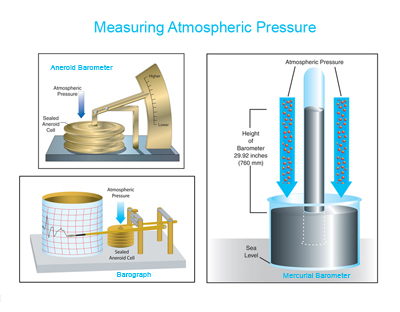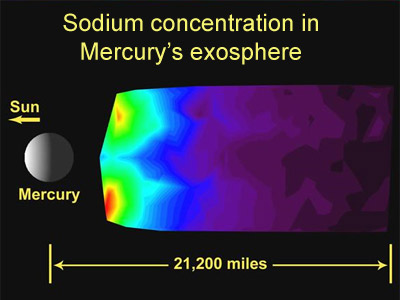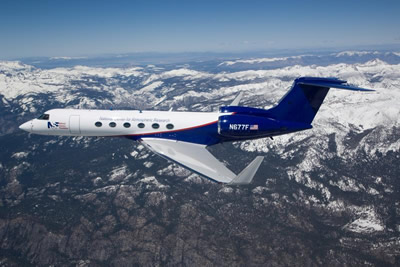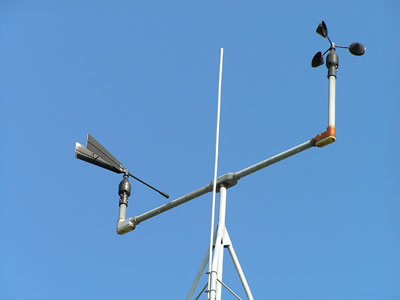Click on image for full size
Windows Original (Using images from FAA)
Measuring Atmospheric Pressure
Even though we can't see air, it is real and is made of up many molecules which are zipping around at astonishing speeds. Air molecules travel about 1,090 mph at the surface of the Earth. That said, all of those molecules definitely exert a force on the objects they come into contact with.The Earth's atmosphere has pressure and it is not constant. Atmospheric pressure is higher at sea level, and decreases as you go higher up in the atmosphere. Some weather systems have slightly higher pressure than others; weather forecasters often talk about High pressure and Low pressure weather systems.
Let's look at how atmospheric pressure is measured. Traditionally, atmospheric pressure has been measured by a mercurial barometer. The first was actually introduced in 1643 by one of Galileo's assistants. A mercurial barometer has a section of mercury exposed to the atmosphere, which exerts a force downward on the mercury (see image). If there is an increase in pressure, it forces the mercury to rise inside the glass tube and a higher measurement is indicated. If atmospheric pressure decreases, downward force on the mercury lessens and the height of the mercury inside the tube lowers. A lower measurement would be indicated. This type of instrument can be used in a lab or a weather station, but is not easily transported. Measurements from a mercurial barometer are mostly made in inches of Mercury (in Hg).
An aneroid barometer can be used in place of a mercurial barometer. It is easier to transport and is often easier to read. This instrument contains sealed aneroid cells that contract or expand depending on changes of atmospheric pressure. The contractions or expansions of the cell move a mechanical arm that indicates higher or lower air pressure (see image). An aneroid barometer is what is used in aircraft as the altimeter. The altimeter is the vital instrument that measures height of the aircraft off the ground once the altimeter is adjusted for nonstandard pressure and temperature levels.
Either a mercury barometer or an aneroid barometer can be set up to make constant measurements of atmospheric pressure. Then it is called a barograph (see image). The barograph may constantly record pressure on paper or foil wrapped around a drum that makes one revolution per day, per week, or per month. Nowadays, many, but not all, mechanical weather instruments have been replaced by electronic instruments that record atmospheric pressure onto a computer.
Atmospheric pressure can be recorded and reported in many different units. As mentioned, a mercurial barometer makes measurements in inches of Mercury (in Hg). This unit is commonly used in aviation in the U.S. Pounds per square inch (abbreviated as p.s.i.) is common in the English system of units, and the pascal (abbreviated Pa) is the standard in the Metric (SI) system. Since the pressure exerted by Earth's atmosphere is of great practical importance, pressure is sometimes expressed in terms of "atmospheres" (abbreviated atm). At sea level on Earth when it is 0oC the pressure is 1 atm. Meteorologists frequently use the bar and millibar (mb) when describing pressure associated with the atmosphere and weather phenomena. You'll often hear millibar used by meteorologists when describing low or high pressure weather systems.
In summary, at sea level when it is 0oC,
1 atmosphere = 29.92 in Hg = 14.7 psi = 101,325 Pa = 1,013.25 mb = 1.013 bar














